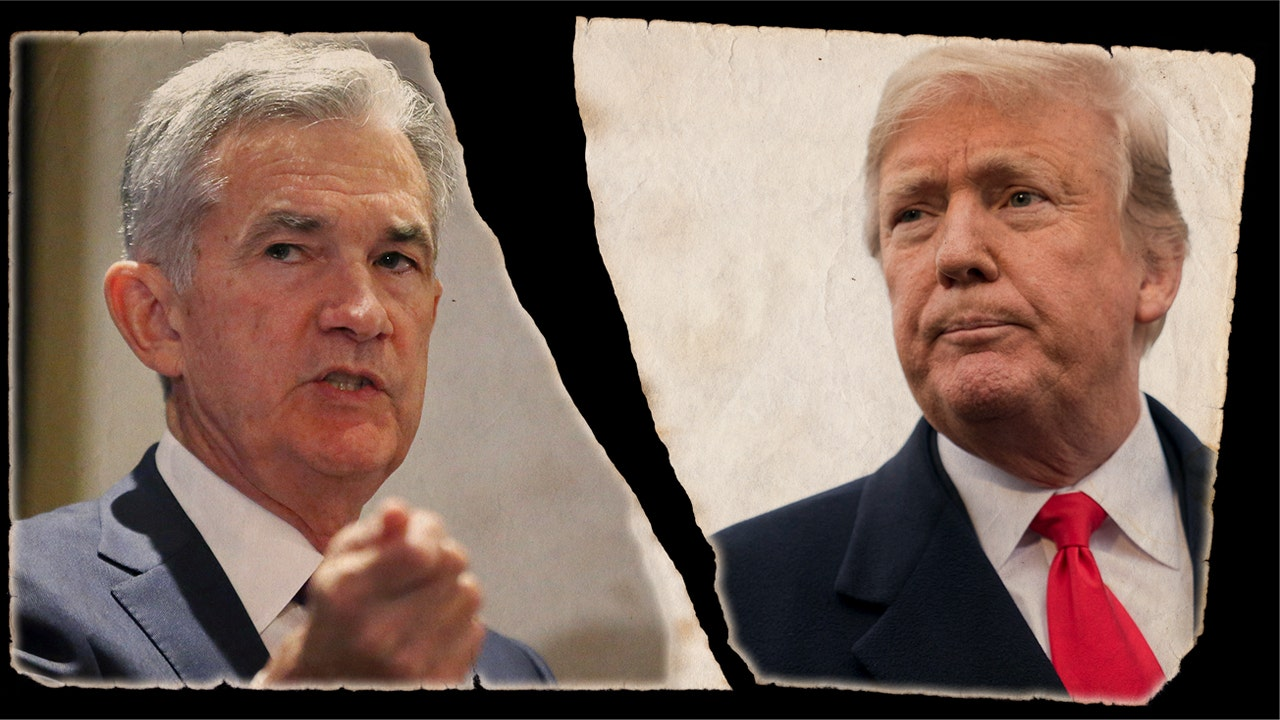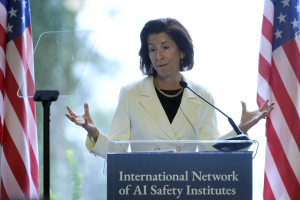Can Trump fire Fed chairman Jerome Powell? This question looms large in discussions about the future of the Federal Reserve and its independence. President Trump’s contentious relationship with Powell has raised eyebrows, especially as they grapple with crucial monetary policy decisions. The potential dismissal of Powell not only highlights Trump’s powers over the Fed chairman but also brings into focus the broader implications for economic stability and the longstanding doctrine of Federal Reserve independence. A premature ousting could disrupt markets and set a precedent that challenges the protective barriers around the Fed’s operations.
The inquiry into whether Trump can dismiss the Federal Reserve chairman delves into the complexities of presidential authority and central bank governance. As tensions rise over fiscal policies and interest rate decisions, the discussion shifts towards the legal and constitutional frameworks that govern such actions. Trump’s potential move to remove Jerome Powell raises critical questions about the impact of this decision on financial markets and the foundational independence of the Federal Reserve. It also reflects broader themes of executive power and the delicate balance necessary in managing an economic institution that operates beyond direct political influence. Understanding the implications of Powell’s potential dismissal invites a closer examination of monetary policy dynamics and the legal interpretations surrounding federal agency oversight.
Understanding the Constitutional Powers of the President and the Fed Chairman
The relationship between a president and the chairman of the Federal Reserve is complex, steeped in tradition and legal nuances. Under the Federal Reserve Act of 1913, the chair serves a four-year term and can only be removed for “cause”. This means that while President Trump theoretically holds power as the head of the executive branch to dismiss the chairman, such action would raise serious legal questions regarding the independence of the Federal Reserve, a crucial institution aimed at stabilizing the economy. The historical precedent suggests that any removal could be contested in court, and the Supreme Court’s stance on executive authority over independent agencies adds another layer of complexity.
The essence of Federal Reserve independence lies in its ability to operate free from political pressures, allowing it to make objective monetary policy decisions. If Trump were to pursue the dismissal of Jerome Powell, it would not only unsettle the financial markets but may lead to a significant legal battle that tests the limits of executive power within the context of independent agencies. Analysts argue that such a move could undermine decades of established legal frameworks intended to protect the Fed from political influence.
The Impact of Firing Jerome Powell on Monetary Policy Stability
The potential for President Trump to fire Fed Chairman Jerome Powell raises concerns about the stability of monetary policy. Markets reacted negatively to hints of Powell’s dismissal, fearing that such a shift would lead to a more aggressive monetary policy aimed at short-term economic benefits rather than maintaining long-term growth and inflation control. The Federal Reserve’s primary goal is to manage inflation and stabilize prices, a function that could be jeopardized by any politically motivated changes at the helm. Analysts warn that if Powell is removed, it would signal to investors that the Fed’s independence is endangered, prompting them to question the reliability of the central bank’s long-term strategies.
Furthermore, a sudden change in leadership, particularly if the new appointee is viewed as aligned with presidential policies, could shift the central bank towards a looser monetary policy, designed to bolster economic growth at the risk of higher inflation. Investors typically respond with caution when uncertainties arise surrounding the Fed’s direction, leading to an increase in long-term interest rates which could stifle economic expansion and dampen market confidence.
Legal Considerations Surrounding the Removal of the Fed Chairman
The prospect of President Trump removing Jerome Powell from his position as Fed Chair enters murky legal territory. The Federal Reserve Act specifies that governors can be removed for cause, but it does not clearly define what this entails for the chairman’s role. This ambiguity opens the door for interpretation, which could ultimately lead to litigation involving federal courts, including the Supreme Court. Legal experts are divided on whether the president has the constitutional authority to dismiss a chairman of an independent agency like the Fed, which adds to the uncertainty and potential risk markets face should such a move be attempted.
Moreover, the Supreme Court’s recent rulings on executive authority and independent agencies indicate a potential shift in how the law could be interpreted. Observers speculate that a court might view Fed governance differently than other regulatory bodies, potentially siding with broader executive powers. However, the financial implications of attempting to dismiss the chairman—especially in a time of economic sensitivity—could dissuade any action that may disrupt the carefully balanced structure of monetary policy.
Market Reactions to Potential Changes in Federal Reserve Leadership
The prospect of firing Jerome Powell has unsettled Wall Street, as market participants are deeply aware of the implications such a drastic action could have. Historically, markets react negatively not only to the actual removal of a Fed chairman but also to the anticipation of such an event. Investors generally prefer stability and predictability in monetary policy to navigate their long-term strategies. Uncertainty regarding Fed leadership could lead to increased volatility and higher interest rates, which would complicate investment decisions across the board.
Market fears about diminished Fed independence are rooted in the belief that any change in leadership with a more favorable inclination towards political directives may prompt a shift towards looser monetary policy. This could lead to inflationary pressures, ultimately eroding trust in the Fed’s commitment to controlling inflation and stabilizing prices. Thus, when speculation arises about potential changes in the leadership of the Federal Reserve, it becomes a focal point for market reactions, highlighting the interconnectedness of political decisions and economic stability.
The Role of the Federal Reserve Chair within Internal Policy Deliberations
The chair of the Federal Reserve plays a critical role in shaping policy debates within the Federal Open Market Committee (FOMC). While the chair holds significant influence, the decision-making process is inherently collaborative, requiring consensus among members of the board. This contrasts with the often-held perception that the chair can unilaterally dictate policy decisions. The interconnected nature of deliberations ensures that various viewpoints are taken into consideration, fostering a more balanced approach to monetary policy.
In the case of Jerome Powell, his leadership has emphasized the necessity of engaging with fellow governors and committee members to forge consensus rather than imposing decisions. This collaborative dynamic is vital for the credibility of the Federal Reserve, allowing it to effectively implement monetary policies that align with both short-term and long-term economic goals. Consequently, any attempt to fire Powell could disrupt this critical collaborative process, introducing further uncertainty into policy deliberations and potentially undermining the Fed’s effectiveness as an independent institution.
Future Implications of Potential Leadership Changes in the Federal Reserve
Looking ahead, should President Trump decide to remove Jerome Powell before the conclusion of his term, the ensuing implications could be far-reaching. Analysts suggest that the markets would interpret such an action as a clear signal that the Fed may prioritize political goals over its statutory mandate. This could redefine investor expectations and alter the landscape for monetary policy moving forward. If the successor is perceived to be more compliant to presidential wishes, the potential for inflation could rise significantly.
Moreover, the long-term credibility of the Federal Reserve might suffer as a result of perceived overreach by the executive branch. The appointment of a new chair would be heavily scrutinized by financial markets, as any indication of a shift away from the Fed’s traditional independence could lead to a loss of trust among investors. This trust is crucial for the effective functioning of monetary policy, as it underpins the central bank’s ability to influence economic conditions without undue external pressure.
Assessing the Balancing Act of Federal Reserve Independence
The tension between the independence of the Federal Reserve and the executive branch’s influence is an ongoing balancing act. The Federal Reserve was established to insulate monetary policy from political pressures, enabling it to focus on economic stability. Recent discussions about the potential for removing the Fed chairman illustrate the precarious nature of this independence, especially amid differing political ideologies about monetary policy. Any moves to assert greater control could signal a departure from established norms, raising concerns about the ramifications for the economy.
This balancing act is critical not just for the Federal Reserve’s credibility, but also for long-term economic health. A politically influenced Fed risks destabilizing its primary objectives—maintaining price stability and fostering full employment. As such, the ramifications of altering leadership at the Fed would send ripples through the financial system, perhaps permanently altering how the institution is perceived by domestic and international investors alike.
Public Perception and the Federal Reserve’s Image
Public perception of the Federal Reserve plays a crucial role in its overall effectiveness and its relationship with the wider economy. As the central bank’s credibility hinges on its perceived independence, any attempt by a president to dismiss the Fed chairman can significantly affect public confidence in monetary policy. Trust in the Fed’s ability to manage inflation and stabilize the economy can falter, especially if the changes are viewed as politically motivated rather than based on economic rationale.
In light of recent discussions about the potential for Trump to fire Powell, markets have become increasingly sensitive to the narrative surrounding the Fed. Public apprehension about its independence can lead to volatility in financial markets, as investors react to the fear of potential shifts in monetary policy direction. Maintaining a stable, independent image of the Federal Reserve is thus imperative for its operations and the economic climate as a whole.
Frequently Asked Questions
Can Trump fire the Fed chairman Jerome Powell?
In theory, President Trump has the power to fire Fed Chairman Jerome Powell, but it hinges on interpretations of the Federal Reserve Act. The law states that Fed governors can be removed for cause, but it’s less clear if that provision applies specifically to the chair. Given the importance of Federal Reserve independence, any attempt to dismiss Powell could lead to significant market disruptions.
What are Trump’s powers regarding the Federal Reserve chairman?
Trump’s powers regarding the Federal Reserve chairman, specifically Jerome Powell, are limited by the legal framework established by the Federal Reserve Act. While he can propose removal, this is complicated by the necessity of ‘for cause’ justification and concerns over undermining the Federal Reserve’s independence.
What would be the impact of firing Jerome Powell?
Firing Jerome Powell could severely harm the Federal Reserve’s credibility and independence. Markets may react negatively to such a move, fearing a shift towards looser monetary policies that could lead to inflation, thus increasing long-term interest rates and creating economic instability.
Could the Supreme Court support Trump’s removal of the Fed chairman?
The Supreme Court’s stance on presidential removal of independent agency leaders is currently uncertain. There is a possibility for further erosion of established precedents regarding ‘for cause’ removals. However, whether the Court would rule favorably on a case involving the firing of a Fed chairman like Powell remains to be seen.
How does the independence of the Federal Reserve relate to Trump’s potential dismissal of Powell?
The independence of the Federal Reserve is fundamental to its function, allowing it to make economic decisions free from political pressure. Trump’s potential dismissal of Powell could threaten this independence, altering how markets perceive Federal Reserve operations and its role in ensuring monetary stability.
What could trigger a market reaction if Trump attempts to dismiss Powell?
A market reaction might be triggered by Trump’s attempt to dismiss Powell due to perceived instability and uncertainty. Analysts believe any move to fire the Fed chairman would signal a deeper willingness to compromise central bank autonomy, which could lead investors to anticipate a more inflationary environment.
Is there a precedent for the Supreme Court intervening in Fed chairman removal cases?
There is currently no clear precedent for the Supreme Court intervening in Fed chairman removal cases specifically. However, past rulings suggest a trend towards limiting ‘for cause’ protections for heads of independent agencies, which could affect future cases regarding the Federal Reserve’s leadership.
| Key Point | Details |
|---|---|
| Trump’s relationship with Powell | The tensions between President Trump and Fed Chairman Jerome Powell, particularly regarding interest rates and economic policies. |
| Legal Authority to Fire | The Federal Reserve Act allows removal for cause, but it’s unclear if the president can fire the chair under current interpretations. |
| Supreme Court Considerations | The Supreme Court’s previous rulings might influence whether the president has removal power, but recent decisions suggest a possible shift. |
| Market Reactions | Firing Powell could destabilize markets due to fears of looser monetary policy. |
| Internal Influence of Fed Chair | The Fed Chair’s influence is significant but not absolute; consensus within the FOMC is required. |
| Successor Impact | Market confidence in monetary policy would be impacted by the circumstances of a replacement, rather than the new chair’s credentials. |
Summary
Can Trump fire Fed chairman? This question looms large amid ongoing discussions about the powers of the presidency and the independence of the Federal Reserve. While speculation abounds regarding President Trump’s potential to replace Jerome Powell, legal interpretations and market reactions complicate this scenario. In light of historical precedents and recent Supreme Court decisions, it appears that firing Powell might not only be legally questionable but could also endanger the credibility of the Federal Reserve, complicating economic stability. Ultimately, whether or not such a move is executed could significantly affect investor confidence and financial markets.





